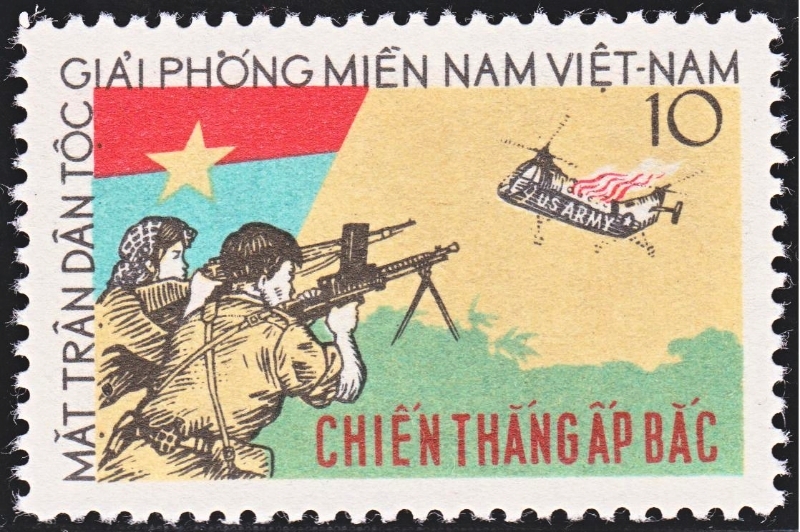In the summer of 2023, I started a series on whether the U.S. could have won the Vietnam War. My initial post examined the political consequences of the U.S. decision to back a coup against South Vietnam’s President Ngo Dinh Diem and how Diem’s assassination disrupted any real chance to create a viable, stable South Vietnamese state. My second examined Lyndon B. Johnson’s fateful decisions about the Vietnam War in the year after JFK’s assassination. Now, I discuss how the United States military refused to learn lessons and adapt to the war they were really fighting using the case study of the 1963 Battle of Ap Bac.
Over a year ago, Bryan reviewed Robert Lyman’s A War of Empires about the British and Japanese campaigns to control Burma during the Second World War. Lyman’s study traced how the British military establishment learned and adapted to the strategic and tactical situation in Burma after suffering intense defeats to the Japanese early in the Second World War. By employing these lessons, the British and their imperial forces reconquered Burma for the Allies and contributed to the Japanese defeat in the Pacific and Asian Theaters. Today, I will look at a significant altercation from the Vietnam War to see how the U.S. military establishment did not learn from its experience fighting against the National Liberation Front (Viet Cong) at Ap Bac, a small hamlet, in 1963.
The January 1963 Battle of Ap Bac was a serious defeat for South Vietnamese (ARVN) military forces that U.S. military advisors interpreted as a victory because they applied conventional rules of warfare to this asymmetric engagement between insurgent and regular military forces. A severely outnumbered command of National Liberation Front guerillas countered a haphazard assault from ARVN soldiers who refused to enter combat, accidentally shot one another, or retreated pell mell when the NLF engaged them. U.S. advisors present at the battle joined the fray and, despite disproportionate ARVN casualties, succeeded in driving the NLF fighters from the field. Though American journalists at the battle rebuffed U.S. military assertions the battle was a victory, the official reports concluded it was since ARVN forces, with significant U.S. support, drove the NLF away from Ap Bac. In reality, the Battle of Ap Bac was more akin to the Battle of Bunker Hill in the American Revolution in terms of its political and strategic importance, and the ARVN’s execution of it more like the Union Army at the Battle of Fredericksburg. The battle demonstrated the NLF’s tenacity and turned an opportunity for a tactical victory into a strategic and political blunder. Yet, unlike the British at Bunker Hill or the Union Army at Fredericksburg, the U.S. military saw the battle as evidence that well-armed ARVN soldiers with U.S. support could fight back from the jaws of defeat and command battlefields in Vietnam. They did not interpret the battle as a defeat, but a tactical victory. Insurgents fled the field, the ARVN controlled Ap Bac, and U.S. military advisors helped ARVN soldiers recover from their operational blunders.
Now, this battle did occur prior to LBJ’s escalation that I discussed in my last post. It even happened before the 1963 coup against Ngo Dinh Diem that started this series. Why discuss it now? Other major engagements in Vietnam, such as the Battle in the Ia Drang Valley, as depicted in the movie We Were Soldiers, or the Tet Offensive in 1968, are more well known and entailed much larger operations either to fight the battle, as in the case of Battle of Ia Drang, or defend against a full scale invasion, as in the case of the Tet Offensive. Examining the Battle of Ap Bac, which U.S. military leaders interpreted as a victory, uses a microhistory of one confrontation to exemplify major blunders in U.S. tactical and strategic interpretation. Today, if a U.S. backed ally engaged enemy combatants with a ten to one advantage, lost two U.S. supplied helicopters, suffered over 100 casualties to the three dead NLF fighters found after the battle, engaged in friendly fire, had a critical portion of the ally’s soldiers abandon the battlefield in the midst of the engagement, and only failed to suffer a complete defeat due to direct U.S. military intervention at the operational and tactical level, the United States military would measure it as a defeat and reevaluate how it was training and preparing allied forces for war. One contemporary example of such a shift was actually General David Petraeus’s troop surge in Iraq in 2007 that involved both intensive anti-insurgency operations against Iraqi insurgents and payouts to former Iraqi soldiers who then joined a new, more robust pro-government coalition to combat remaining insurgent cells in Iraq. Petraeus, in many ways, salvaged a tactical and strategic nightmare in Iraq and converted it into an operational and tactical situation the U.S. could manage. However, in Vietnam, U.S. military advisors and commanders only interpreted battles from the narrow result of casualties and control of territory. From their perspective, Ap Bac demonstrated that a dual U.S.-ARVN operation could succeed and drive off NLF insurgents. Yet, Vietnam was an asymmetrical war where control of territory did not matter as much as winning loyalty and legitimacy in the eyes of the Vietnamese people. The NLF, who lived amongst South Vietnamese people and endured the hardships precipitated by ARVN and U.S. incursions, had that legitimacy in a way that no number of hamlets secured or enemy platoons dispersed could counter.
My point here is that Vietnam was not a war the U.S. won in a military sense and lost in a political one. It was a war that the U.S. misunderstood in a political sense and therefore could win tactically from operation to operation but that never succeeded militarily. Its tactics could not defeat its enemy and U.S. political and military leaders did not realize that in the White House, the Pentagon, or on the ground in Vietnam.
